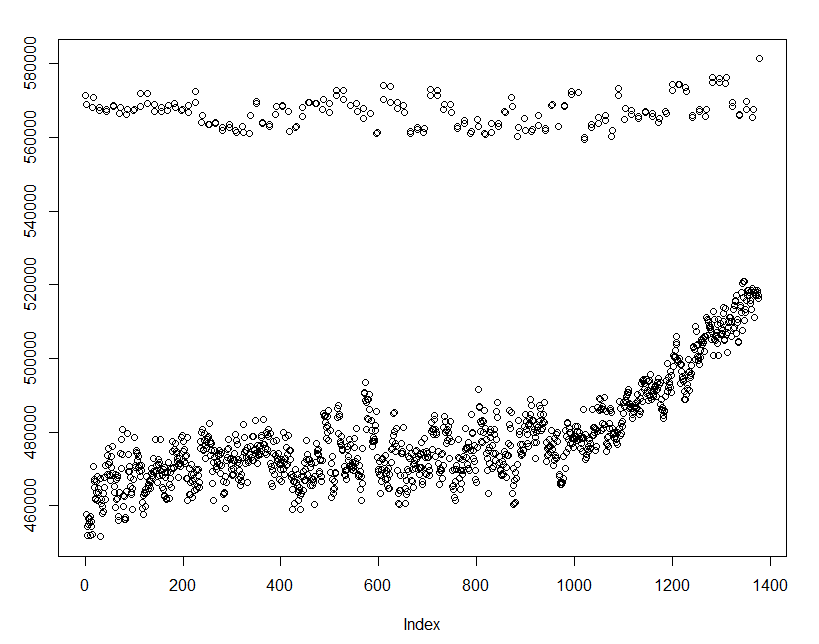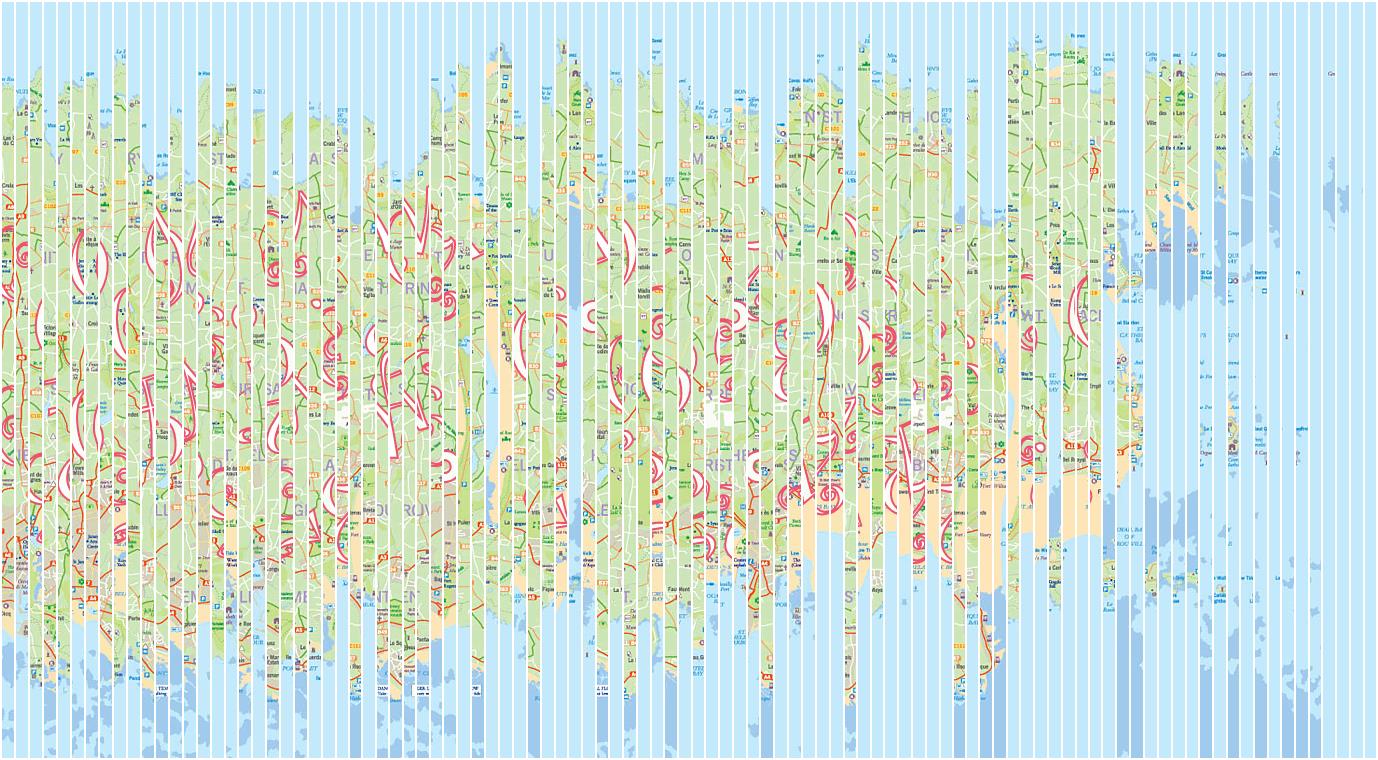This puzzle is in Jersey and features an image, which, judging by the colours and rough shape, is obviously a scrambled version of a map of Jersey. The text confirms that a map has been “shredded”, and your task is to unshred it.

I’m intrigued to know how they did this in the first place — I sincerely hope it wasn’t done by hand. There are 100 slices there, and it’d take forever to do using Photoshop. Similarly, I didn’t want to stitch it back together by hand, so… what about the programmatic approach?
There are two main challenges here. Firstly, I need to divide the image up correctly. Luckily, the cache owner has left a couple of pixels’ white space between each strip. That should be easy to detect. Secondly, we have to decide how to stick them back together. The way I chose to do this was to take the right-hand edge of one strip, and compare the RGB values from the left hand edges of the others. Whichever one gives the best match gets glued on, and we start again, repeating until we have just one strip left.
I’m using the jpeg package, which converts a jpeg file into a three dimensional array representing the red, green and blue pixels.
library(jpeg) library(plyr) library(tidyverse) library(magrittr) library(abind)## get the imagedr <- "C:/Users/alunh/OneDrive/Documents/Repos/geo2/Solving/" shred <- readJPEG(paste0(dr, "GC4F5HY_shredded-jps09.jpg")) * 255## find the white lineswhiteness <- apply(shred, 1:2, sum)strips <- whiteness %>% apply(2, sum) strips %>% plot()

This is great! There’s a clear demarcation between the white separating lines and the strips.
## assume everything above 540,000 is a dividing line divides <- which(strips > 540000) divides <- divides[-1]divides <- rev(rev(divides)[-1])divides %<>% matrix(ncol = 2, byrow = TRUE)## split the original image into strips shredl <- apply(divides, 1, function(q) { shred[, (q[1]+1):(q[2]-1), ] })
Now we have a list of strips, we need a function to compare two strips, and another one to bind two given strips together.
## takes two strips and compares the right v left edgescompare_strips <- function(stripsl, x, y) {r <- stripsl[[x]][, ncol(stripsl[[x]]), 1] - stripsl[[y]][, 1, 1]g <- stripsl[[x]][, ncol(stripsl[[x]]), 2] - stripsl[[y]][, 1, 2]b <- stripsl[[x]][, ncol(stripsl[[x]]), 3] - stripsl[[y]][, 1, 3]r %<>% abs() %>% sum()g %<>% abs() %>% sum()b %<>% abs() %>% sum()r+g+b }## bind two given strips togetherbindem <- function(stripsl, lft, rgt) {bound <- abind(stripsl[[lft]], stripsl[[rgt]], along=2)#[,,1] %>% image()stripsl <- c(stripsl[-c(lft, rgt)], list(bound)) }
Now the hard work is done, we can run the strips through:
for (qq in 1:99) {wm <- sapply(2:length(shredl), function(q) compare_strips(shredl, 1, q)) %>% which.min() + 1shredl <- bindem(shredl, 1, wm)}
And finally, we’ll export the solution to see whether its legible.
(shredl[[length(shredl)]]/255) %>%jpeg::writeJPEG(target = paste0(dr, "GC4F5HY_shredded-jps09_solved.jpg"))
And here it is. I’ve censored the final coordinates out of respect for the cache owner. You can see the algorithm for stitching together the strips hasn’t worked perfectly, but the map and coordinates are legible. Success!

And yes, the coordinates are upside down. That’s a feature of the puzzle, I guess. The strips I’ve output are oriented the same way as in the original, as you can see from the town names in the map itself.

Thanx for this solution!
Unfortunately, I have no clue of R, thus I just installed all package and pasted your source code.
In the very first sequence I got an error message I cannot deal with:
unexpected symbol in “whiteness <- apply(shred, 1:2, sum) strips"
A hint would be nice.
LikeLike
Hi
Thanks for spotting the error! The problem was simply that when I pasted the code into WordPress it killed the newline characters. The line you got the error on should have been split into two separate lines.
I’ve updated the code in the post, so it should run fine.
I’ve also found a better way to paste code into WordPress, so fingers crossed it won’t happen again.
Let me know if you solve it!
LikeLike
Works fine, many thanks!
LikeLike